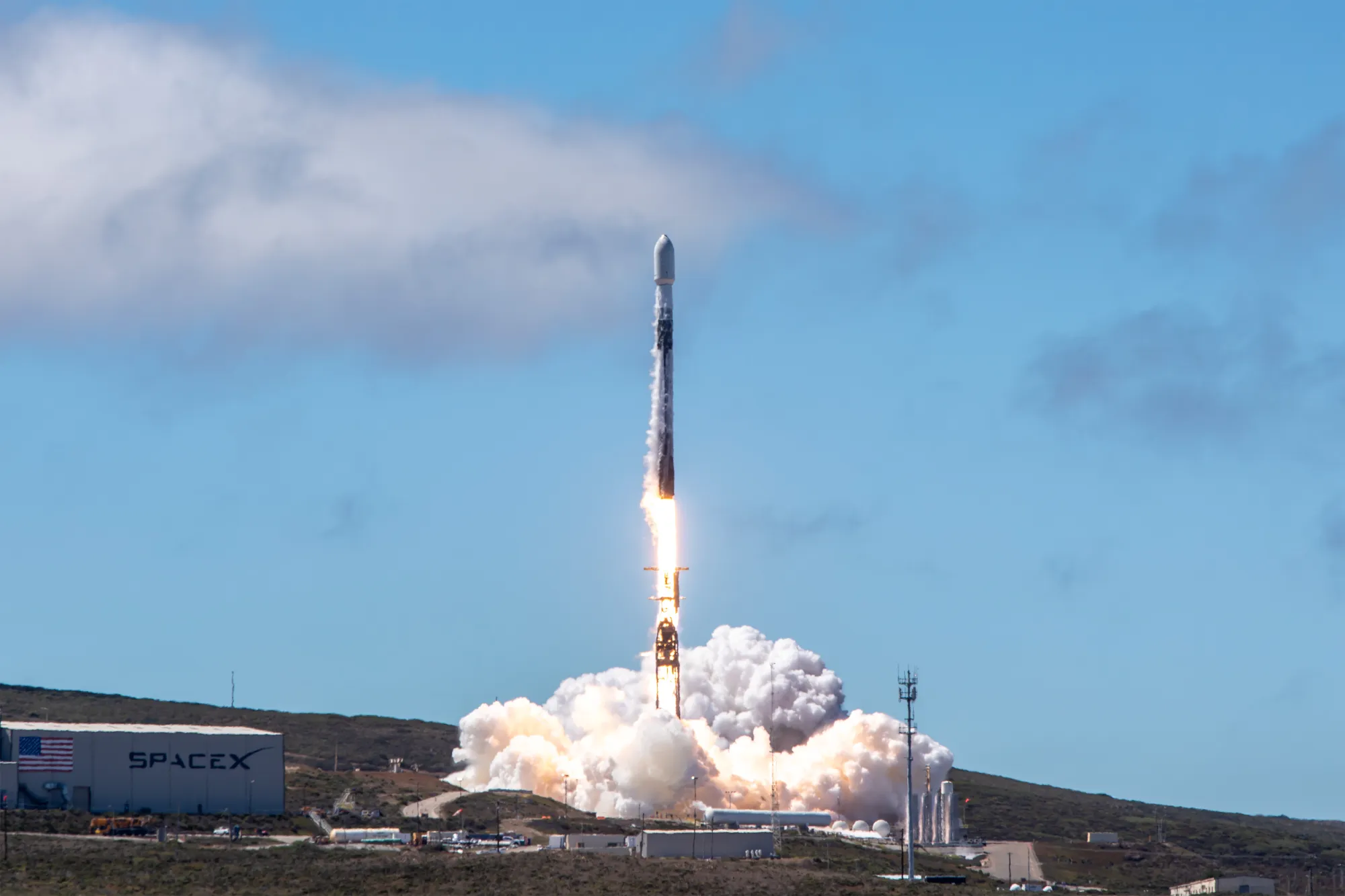These twin spacecraft are set to investigate how our planet’s magnetic shield defends us from space weather, potentially revolutionising our knowledge of solar interactions with Earth.
Launched aboard a SpaceX Falcon 9 rocket at 11:13 am PDT on Wednesday from California’s Vandenberg Space Force Base, the TRACERS mission marks a new era in heliophysics.
Within hours, ground control confirmed communication with both satellites, signalling the start of a groundbreaking scientific journey.
Sean Duffy, NASA’s acting Administrator, highlighted the significance of the mission: “NASA is proud to launch TRACERS to demonstrate and expand American preeminence in space science research and technology.
“The TRACERS satellites will move us forward in decoding space weather and further our understanding of the connection between Earth and the Sun.
“This mission will yield breakthroughs that will advance our pursuit of the Moon, and subsequently, Mars.”
What TRACERS will do
TRACERS is designed to explore magnetic reconnection – a fundamental process in which magnetic field lines from the Sun and Earth collide, break apart, and explosively realign.
This phenomenon releases tremendous amounts of energy, flinging charged particles toward our atmosphere and creating disturbances known as space weather.
Orbiting through the polar cusp, a funnel-shaped region near Earth’s magnetic poles, the twin satellites will fly just 10 seconds apart.
Over a 12-month primary mission, they will collect an unprecedented 3,000 measurements, providing a time-lapse-like sequence of how magnetic reconnection events evolve and impact our planet.
This region is ideal for studying magnetic interactions because it allows solar wind particles to enter Earth’s atmosphere more directly.
By capturing data on these particles as they descend, TRACERS will offer scientists a clearer picture of how solar storms disrupt satellite operations, GPS signals, and even power grids on Earth.
Commissioning period underway
Before diving into their full science operations, TRACERS will undergo a four-week commissioning phase.
During this period, mission controllers will thoroughly check and calibrate onboard systems to ensure the satellites are ready for the demands of their year-long mission.
Once fully operational, TRACERS will join NASA’s fleet of heliophysics missions, contributing critical data to help safeguard Earth-based and space-based infrastructure from the effects of solar activity.
Hitchhiking science: Athena EPIC, PExT, and REAL
Alongside TRACERS, the Falcon 9 also deployed three secondary payloads: Athena EPIC, PExT, and REAL – each with a unique scientific or technological mission.
Athena EPIC is a technology demonstration designed to streamline future satellite missions. It showcases a modular commercial SmallSat platform that reduces cost and accelerates deployment schedules.
After its two-week commissioning phase, Athena EPIC will spend a year measuring outgoing longwave radiation from Earth, a vital data source for climate monitoring.
PExT (Polylingual Experimental Terminal) will pioneer new communication methods in space. By utilising a software-defined radio system, PExT will demonstrate the ability to switch between commercial and government networks, much like mobile phones do when roaming between service providers. This could pave the way for more flexible and resilient space communications.
REAL (Relativistic Electron Atmospheric Loss) will study how high-energy electrons in the Van Allen radiation belts are scattered into Earth’s atmosphere.
These belts, shaped by Earth’s magnetic field, contain particles that pose risks to both spacecraft and astronauts. REAL’s insights will improve our understanding of radiation hazards in space.
A leap forward in space weather science
With TRACERS now in orbit, NASA is poised to make significant strides in understanding how Earth’s magnetic field interacts with the Sun.
By capturing the fast-moving and explosive dynamics of magnetic reconnection in real time, the mission promises to inform better space weather forecasting, which is vital for protecting technology, astronauts, and life on Earth.
As the TRACERS mission begins its scientific operations, researchers and engineers alike are hopeful it will reveal new details about the invisible forces shaping our planet’s relationship with space.
